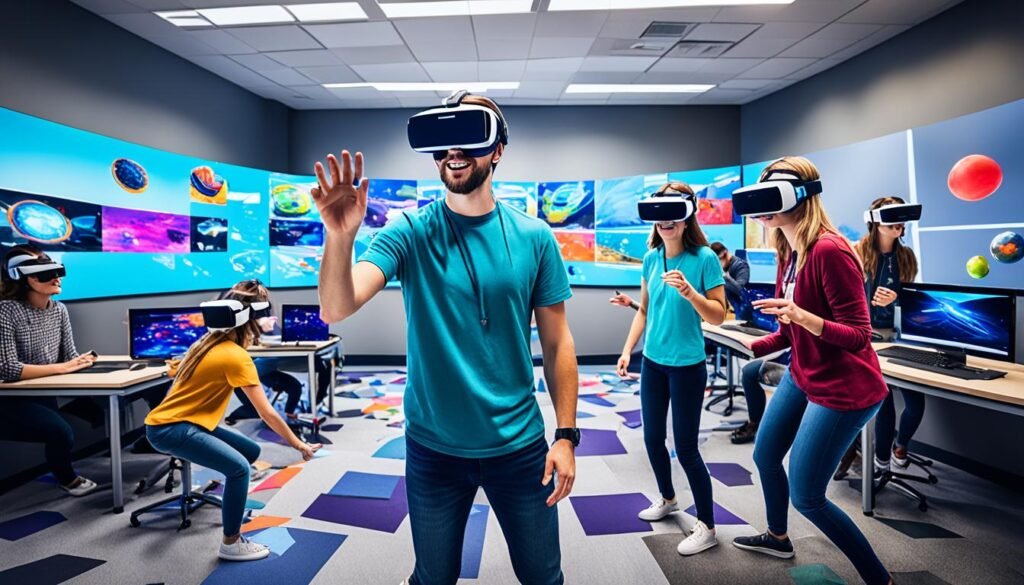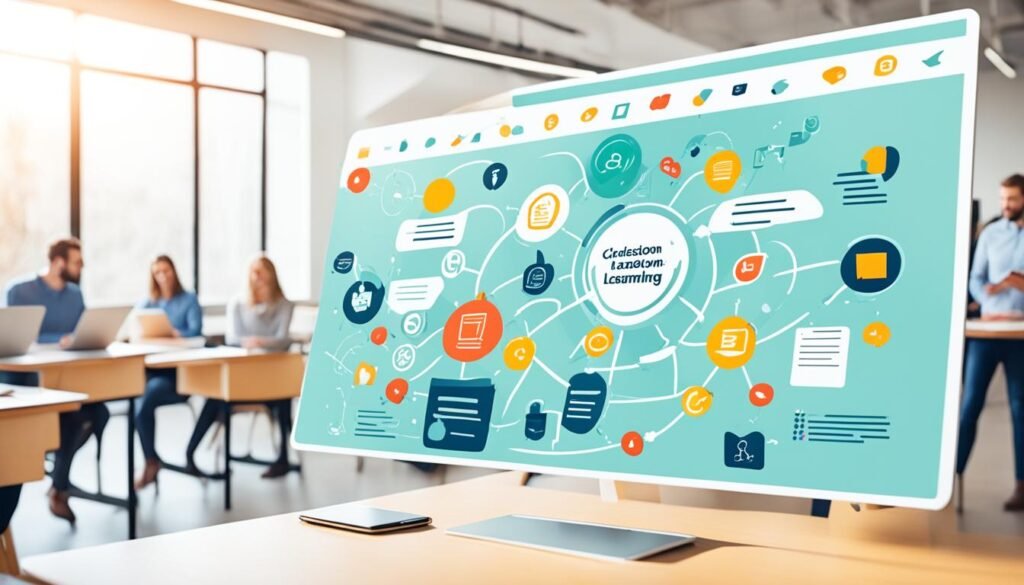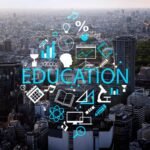The field of education is constantly evolving, and it is essential for educators to stay up to date with the latest trends in curriculum development. These trends have a significant impact on student learning and teaching practices, shaping the way students are educated and prepared for the future.
By understanding and embracing these trends, educators can provide more effective and relevant learning experiences for their students. This article will explore the latest trends in curriculum education, highlighting their importance and how they can be implemented in the classroom.
Key Takeaways
- Staying informed about curriculum trends is crucial for educators.
- Curriculum trends impact student learning and teaching strategies.
- Virtual reality, emotional intelligence, blended learning, coding, and wellness education are some of the latest trends.
- Implementing these trends benefits student engagement, relevancy, and adaptability.
- The future of curriculum development will be influenced by AI and technology.
The Significance of Curriculum Trends
Staying informed about the latest curriculum trends is crucial for educators who want to provide the best learning experiences for their students. As the educational landscape continues to evolve, it’s essential for teachers and administrators to adapt their teaching strategies to address these trends in order to ensure that students are equipped with the necessary skills and knowledge for future success.
Understanding curriculum trends allows educators to stay ahead of the curve and make informed decisions about instructional practices. By incorporating these trends into their teaching strategies, educators can create more engaging and relevant learning experiences that cater to the evolving needs of their students.
“Education is not the learning of facts, but the training of the mind to think.” – Albert Einstein
Keeping up with curriculum trends enables educators to foster student engagement and enhance student learning outcomes. By aligning their teaching practices with current trends, educators can create a learning environment that promotes critical thinking, problem-solving, and creativity.
Implementing innovative and student-centered teaching strategies that align with curriculum trends can also improve student motivation and enjoyment of the learning process. When students see the real-world relevance of what they are learning, they are more likely to be actively engaged and motivated to succeed.
As teaching strategies evolve to meet the demands of the future, it is essential for educators to embrace curriculum trends. By doing so, they can provide their students with the necessary tools and skills to thrive in an ever-changing world.
Benefits of Embracing Curriculum Trends
There are several benefits associated with embracing curriculum trends:
- Enhanced student engagement: Incorporating current curriculum trends into teaching practices can increase student engagement and participation in the learning process.
- Relevancy: By aligning teaching strategies with curriculum trends, educators ensure that learning experiences are relevant to the real-world challenges and opportunities that students will face.
- Adaptability: Embracing curriculum trends equips educators with the flexibility to adapt their teaching strategies to meet the evolving needs of their students.
Curriculum trends play a vital role in shaping the future of education. By staying informed and incorporating these trends into their teaching practices, educators can provide their students with a well-rounded and impactful learning experience.
References:
- “The significance of curriculum trends in education.” JSTOR Daily, www.jstor.org/daily/curriculum-trends.
- “Why keeping up with curriculum trends is important for educators.” Education Week, www.edweek.org/curriculum/trends/educators-importance.
| Key Points | Benefits |
|---|---|
| Staying informed about the latest curriculum trends | Enhanced student engagement |
| Aligning teaching strategies with current trends | Relevancy |
| Creating a learning environment that promotes critical thinking and problem-solving | Adaptability |
5 Latest Curriculum Trends in Education
The field of education is constantly evolving, driven by various factors such as technological advancements, social changes, and the evolving needs of students. To stay ahead and provide students with the best possible learning experiences, educators must be aware of the latest curriculum trends. Here are five key trends that are shaping curriculum development:
1. Integration of Virtual and Augmented Reality
The integration of virtual and augmented reality (VR/AR) technologies in classrooms is revolutionizing the way students learn. These immersive technologies allow students to explore and interact with virtual environments, bringing concepts to life and enhancing their understanding of complex subjects. VR/AR experiences also promote engagement, critical thinking, and problem-solving skills.
2. Focus on Emotional Intelligence Education
Recognizing the importance of emotional intelligence, many schools are incorporating emotional intelligence education into their curriculum. Emotional intelligence encompasses skills such as self-awareness, self-regulation, empathy, and social skills. By teaching students how to understand and manage their emotions, educators help them develop better interpersonal relationships, make informed decisions, and navigate the complexities of the modern world.
3. Adoption of Blended Learning Models
Blended learning models, which combine online and face-to-face instruction, have gained significant popularity in recent years. This approach provides students with the flexibility to learn at their own pace while still benefiting from in-person interactions with teachers and peers. Blended learning environments also foster personalized learning experiences, allowing students to take ownership of their education and explore their interests.
4. Incorporation of Coding and Computer Science
In an increasingly digital world, the integration of coding and computer science into various subjects has become essential. Teaching students the fundamentals of coding helps develop their problem-solving skills, logical thinking abilities, and computational skills. Moreover, it equips them with the knowledge and skills needed for future careers in technology-related fields.
5. Inclusion of Wellness and Mental Health Education
As the importance of mental health and well-being becomes more evident, curriculum trends now emphasize wellness and mental health education. These programs focus on teaching students strategies for stress management, self-care, and promoting positive mental health. By addressing the mental and emotional needs of students, schools create a supportive environment that enhances overall well-being and academic success.
By embracing these curriculum trends, educators can create dynamic and engaging learning experiences that meet the evolving needs of students. Implementing virtual and augmented reality, fostering emotional intelligence, adopting blended learning models, incorporating coding and computer science, and promoting wellness and mental health education are key steps towards preparing students for the challenges of the future.
Next, we’ll take a closer look at the integration of virtual and augmented reality in curriculum and instruction, exploring their benefits and potential impact on student learning.
Virtual and Augmented Reality Integration

The integration of virtual and augmented reality (VR/AR) is revolutionizing curriculum and instruction in education. These immersive technologies are increasingly popular in classrooms, providing students with unique and engaging learning experiences.
“The use of VR/AR in education unlocks new possibilities for hands-on learning and interactive exploration, allowing students to go beyond the confines of traditional textbooks and lectures,” says Dr. Emily Johnson, an expert in educational technology.
Virtual reality integration involves the use of computer-generated simulations to create realistic 3D environments, while augmented reality integration overlays digital content onto the real world, enhancing the learning experience.
One of the key benefits of VR/AR integration is its ability to provide students with a hands-on approach to learning. Instead of simply reading about historical events or scientific concepts, students can actively immerse themselves in virtual environments, exploring concepts, conducting experiments, and solving problems in a tangible way.
Research has shown that hands-on learning significantly improves student engagement and retention of information. By incorporating VR/AR into the curriculum, educators can create dynamic and interactive learning opportunities that cater to different learning styles and foster a deeper understanding of complex subjects.
Moreover, VR/AR integration promotes experiential learning, enabling students to apply their knowledge in real-world contexts. For example, medical students can perform virtual surgeries, engineering students can design and test prototypes, and language learners can practice their skills in immersive language simulations.
By actively participating in these virtual scenarios, students develop critical thinking, problem-solving, and decision-making skills. They learn to navigate complex situations and collaborate with peers in a simulated yet authentic environment.
In addition to subject-specific applications, VR/AR integration can also enhance social-emotional learning. Students can engage in role-playing exercises that develop empathy, conflict resolution, and interpersonal communication skills.
Furthermore, VR/AR integration promotes inclusivity and accessibility in education. Students with different learning abilities and preferences can benefit from these immersive technologies, as they provide multiple modalities for understanding and interacting with content.
As VR/AR technology becomes more accessible and affordable, schools and institutions are adopting this immersive approach to education. Educators are creating VR/AR experiences that align with curriculum goals, and students are increasingly engaging in hands-on learning through these technologies.
| Benefits of VR/AR Integration in Curriculum | Examples |
|---|---|
| Enhanced student engagement | Interactive virtual historical tours that bring history to life |
| Deeper understanding of complex subjects | Virtual science experiments that allow students to manipulate variables |
| Development of critical thinking and problem-solving skills | Augmented reality puzzles and challenges that require strategic thinking |
| Experiential learning opportunities | Virtual field trips to explore ecosystems or cultural landmarks |
| Promotion of social-emotional learning | Virtual simulations for practicing empathy and understanding others’ perspectives |
| Inclusivity and accessibility for all learners | Virtual environments that cater to different learning styles and abilities |
As educational institutions continue to embrace VR/AR integration, students can expect more immersive, interactive, and personalized learning experiences that prepare them for the challenges of the future.
Emotional Intelligence Education

Curriculum trends in education are placing a growing emphasis on emotional intelligence education. Educators recognize the importance of equipping students with the skills to manage their emotions, empathize with others, and develop strong interpersonal relationships. By integrating programs and activities that focus on emotional intelligence, students not only enhance their academic success but also become more compassionate individuals.
Emotional intelligence education encompasses various aspects, including the development of social skills, self-regulation, and empathy. Students learn to navigate social interactions, understand and express their emotions in a healthy way, and recognize and respond to the emotions of others. These skills are crucial for personal growth, establishing positive relationships, and succeeding in various aspects of life.
Enhancing social skills: Emotional intelligence education provides opportunities for students to develop strong social skills, enabling them to communicate effectively, collaborate with others, and build meaningful connections. By understanding the importance of active listening, effective communication, teamwork, and conflict resolution, students become better equipped to navigate social settings and succeed in their personal and professional lives.
Promoting self-regulation: Emotional intelligence education helps students develop the ability to regulate their emotions, thoughts, and behaviors. By understanding their emotions and learning effective strategies for managing them, students can maintain control and make informed decisions even in challenging situations. Self-regulation skills contribute to improved focus, impulse control, resilience, and overall well-being.
“Emotional intelligence is a key ingredient in personal and professional success. It equips individuals with the skills to understand and manage their emotions, build healthy relationships, and navigate the complexities of life.” – Dr. Daniel Goleman
Fostering empathy: Emotional intelligence education cultivates empathy in students, enabling them to understand and share the feelings of others. By promoting empathy, students develop a sense of compassion, kindness, and consideration for others, leading to more harmonious relationships and a cooperative, inclusive society.
Implementing emotional intelligence education within the curriculum supports holistic student development. It not only enhances academic performance but also nurtures important life skills, emotional well-being, and social competence. Schools and educators play a vital role in creating an environment that fosters emotional intelligence, promoting the growth and success of students both in and outside the classroom.
| Benefits of Emotional Intelligence Education | Student Outcomes |
|---|---|
| 1. Improved social skills | – Enhanced communication and collaboration – Positive relationships – Conflict resolution skills |
| 2. Enhanced self-regulation | – Increased impulse control – Improved focus and attention – Resilience and adaptability |
| 3. Development of empathy | – Increased compassion and kindness – Understanding the perspectives of others – Building a more inclusive society |
| 4. Positive emotional well-being | – Healthy emotion management – Stress reduction – Enhanced mental health |
| 5. Academic success | – Improved learning engagement – Better problem-solving skills – Higher achievement levels |
Hybrid and Blended Learning Models

The COVID-19 pandemic has reshaped the landscape of education, prompting the rapid adoption of hybrid and blended learning models. These innovative approaches combine the benefits of in-person and online learning, creating flexible and personalized learning experiences for students.
In a hybrid learning model, students alternate between attending physical classes and participating in online activities. This allows for a balance between face-to-face interaction and the convenience of remote learning. Students can engage with their peers and teachers in a traditional classroom setting while also benefiting from the flexibility and accessibility of online resources.
On the other hand, blended learning integrates online learning components into a traditional classroom setting. This approach caters to different learning styles and paces, providing students with personalized learning experiences. By leveraging digital tools and resources, educators can create interactive and engaging lessons that empower students to take ownership of their learning.
Hybrid and blended learning models offer numerous advantages. They foster flexibility, allowing students to learn at their own pace and accommodate other commitments. Additionally, these models promote personalized learning, enabling educators to tailor the content and delivery methods to each student’s specific needs and interests.
One of the key benefits of hybrid and blended learning is the opportunity for students to develop crucial social skills while also practicing self-reflection and independent learning. In the online environment, students learn to communicate effectively, collaborate with peers, and problem-solve in virtual spaces. Simultaneously, they cultivate essential skills such as time management, self-discipline, and self-motivation.
“Hybrid and blended learning models provide the flexibility and adaptability needed to meet the diverse needs of today’s students while also preparing them for the digital world.” – Dr. Michelle Johnson
The implementation of hybrid and blended learning models has proven to be particularly valuable during the pandemic when traditional in-person education was disrupted. This approach allowed schools to continue providing education while ensuring the safety of students and staff.
The Benefits of Hybrid and Blended Learning Models
Hybrid and blended learning models offer a range of benefits for both students and educators:
- Flexibility: These models enable students to personalize their learning schedule, accommodating other commitments and individual preferences.
- Personalized Learning: Educators can tailor the content and delivery methods to meet each student’s unique needs, fostering deeper understanding and engagement.
- Improved Access: Online components provide access to learning materials and resources beyond the constraints of the physical classroom.
- Enhanced Engagement: The integration of multimedia and interactive elements in online learning captivates students’ attention and promotes active participation.
- Developing Essential Skills: Students cultivate skills such as self-regulation, time management, and digital literacy, preparing them for success in the digital age.
By leveraging hybrid and blended learning models, educators can create dynamic learning environments that address the diverse needs of their students. These models empower students to take an active role in their education, fostering lifelong learning skills and preparing them for the challenges of the future.
| Hybrid Learning | Blended Learning |
|---|---|
| Combines in-person and online learning | Integrates online learning into traditional classrooms |
| Provides flexibility and personalized learning experiences | Caters to different learning styles and paces |
| Develops social skills and independent learning | Promotes active participation and self-reflection |
Coding and Computer Science

Digital literacy and coding skills are increasingly important in today’s digital age. As technology permeates every aspect of our lives, understanding coding and computer science is essential for individuals to navigate and thrive in the modern world. By integrating coding and computer science into various subjects, educators can equip students with crucial problem-solving skills and nurture their ability to think critically.
When students engage with coding, they learn more than just programming syntax and algorithms. They develop a set of problem-solving skills that empower them to tackle complex tasks and find creative solutions. Coding fosters logical thinking, enabling students to break down problems into manageable parts and develop step-by-step strategies to solve them. This process strengthens their analytical and critical-thinking abilities, which are valuable not only in computer science but also in other subject areas and real-life scenarios.
In addition to problem-solving skills, coding also promotes digital literacy. In an increasingly digital world, understanding how technology works and being able to navigate digital platforms and tools is crucial. By learning coding, students gain a deeper understanding of the digital landscape and become more confident in using and leveraging technology to their advantage.
Coding and computer science education go beyond technical knowledge. They also foster creativity and innovative thinking. When students engage in coding projects and challenges, they are encouraged to think outside the box, experiment with different approaches, and come up with unique solutions. This nurtures their creativity and allows them to explore their own ideas and implement them through programming.
Moreover, coding and computer science education empower students to become active creators rather than passive consumers of technology. They learn to build websites, design apps, and develop software, giving them agency over technology and the ability to shape and influence the digital world around them.
Integrating coding and computer science into various subjects can take different forms. For example, teachers can incorporate coding projects into mathematics classrooms, where students can use programming to solve mathematical problems or simulate real-life scenarios. In science classes, students can apply coding to model scientific phenomena or analyze research data. By infusing coding across disciplines, educators make computer science accessible and relatable, connecting it to students’ existing interests and helping them see its applications in different fields.
By equipping students with coding and computer science skills, educators prepare them for future careers and empower them to thrive in an increasingly digital and interconnected world. As technology continues to advance and shape our society, the ability to code and think computationally will become even more valuable and sought after. By embracing coding and computer science education, schools provide their students with a strong foundation for success in the rapidly evolving digital landscape.
Wellness and Mental Health Education

The inclusion of wellness and mental health education in the curriculum is vital. It is essential for schools to prioritize the well-being of their students and equip them with the necessary tools to navigate the challenges they may face in their academic and personal lives. By integrating wellness education, mental health awareness, stress management techniques, and coping strategies into the curriculum, schools can create a supportive environment that nurtures the overall well-being of their students.
One of the key focuses of wellness education is stress management. Students often experience high levels of stress due to academic pressures and other external factors. By teaching stress management techniques such as deep breathing exercises, mindfulness practices, and time management strategies, students are better equipped to handle stress and maintain their mental well-being.
Additionally, mental health education plays a crucial role in addressing the stigma surrounding mental health issues. By educating students about various mental health conditions and promoting empathy and understanding, schools can create a safe space for students to seek support and openly discuss their mental health concerns. This helps reduce stigma and encourages students to prioritize their own mental well-being.
“Wellness and mental health education are foundations for building resilient individuals who are better prepared to face challenges and navigate their personal and academic lives effectively.” – Dr. Emily Johnson, Clinical Psychologist
Coping strategies are another essential aspect of wellness education. By teaching students healthy coping mechanisms and self-care practices, they can develop resilience and build a toolkit of strategies to manage stress, anxiety, and other emotional challenges. These coping strategies empower students to take control of their mental well-being and develop lifelong skills for maintaining emotional balance.
It is crucial to integrate wellness and mental health education across various subjects and grade levels. This ensures that students receive consistent and comprehensive education on these topics throughout their academic journey. By embedding wellness education into the curriculum, schools can foster a culture of well-being, promoting the holistic development of students.
Wellness education, mental health awareness, stress management techniques, and coping strategies, therefore, provide students with the necessary skills to navigate the academic and personal challenges they may encounter. By prioritizing student well-being, schools create an environment that supports positive mental health and equips students with the tools they need for a successful and fulfilling life.
The Importance of Wellness Education
Wellness education plays a crucial role in preparing students for the challenges they may face throughout their lives. By incorporating wellness practices and mental health awareness into the curriculum, schools can empower students to prioritize their well-being.
Here are a few key benefits of wellness education in schools:
- Improved mental health and well-being
- Enhanced coping skills and resilience
- Reduced stigma surrounding mental health
- Increased academic performance and productivity
- Promotion of positive self-care practices
- Preparation for future workplace challenges
Prominent Curriculum Issues and their Solutions

Despite advancements in education, several curriculum issues still persist, affecting the quality and effectiveness of student learning. These issues include outdated content, inflexibility, assessment overload, inclusivity challenges, and a disconnect from real-world relevance. It is crucial for educators and curriculum developers to address these challenges to ensure that students receive a well-rounded and meaningful education.
1. Outdated Content
One of the primary issues in curriculum development is the presence of outdated content. As society and industries evolve, it is essential to update curriculum materials regularly to reflect current knowledge, trends, and advancements. By conducting regular content reviews and engaging in ongoing professional development, educators can ensure that the curriculum aligns with the latest information and best practices.
2. Lack of Flexibility
The lack of flexibility in curriculum design can limit student engagement and hinder personalization. By incorporating modular content into the curriculum framework, educators can provide students with more choices and options for learning. This approach allows students to explore their interests and strengths, promoting a more individualized and engaging learning experience.
3. Assessment Overload
An excessive emphasis on standardized testing and excessive assessments can lead to assessment overload and hinder student learning. Diversifying assessment methods, such as incorporating performance-based assessments and project-based learning, can provide a more comprehensive and authentic evaluation of student progress. These alternative assessment approaches enable students to demonstrate their knowledge and skills in a more practical and relevant manner.
4. Inclusivity Challenges
Curriculum should cater to the diverse needs and backgrounds of all students. To ensure inclusivity, curriculum developers should incorporate multicultural perspectives, diverse examples, and inclusive language in instructional materials and activities. By embracing diversity and presenting multiple perspectives, students can develop a broader understanding of the world and foster empathy.
5. Lack of Real-World Relevance
Many students struggle to connect their learning to real-world applications and experiences. Integrating practical skills and real-world scenarios into the curriculum can bridge this gap and enhance student motivation and engagement. By incorporating project-based learning, internships, and industry partnerships, educators can provide students with opportunities to apply their knowledge and skills in authentic contexts.
“Addressing these prominent curriculum issues requires a collaborative effort between educators, curriculum developers, and education policymakers. By actively seeking solutions and implementing necessary changes, we can create a curriculum that is dynamic, inclusive, and relevant to the needs of today’s students.”
In conclusion, tackling curriculum issues such as outdated content, lack of flexibility, assessment overload, inclusivity challenges, and a lack of real-world relevance is crucial for providing high-quality education. By implementing solutions such as regular content review, incorporating modular content, diversifying assessment methods, embracing inclusivity, and integrating practical skills, educators can create a curriculum that caters to the diverse needs and prepares students for success in the modern world.
Benefits of Implementing Curriculum Trends

Implementing curriculum trends in education offers a multitude of benefits that contribute to enhanced student engagement, relevancy of content, and adaptability to the ever-evolving needs of students. By embracing these trends, educators can create a more effective and engaging learning environment, preparing students for future success.
“Implementing curriculum trends in education offers a multitude of benefits that contribute to enhanced student engagement, relevancy of content, and adaptability to the ever-evolving needs of students.”
1. Increased Student Engagement
By incorporating innovative curriculum trends, educators can create learning experiences that captivate students’ interest and foster a deeper level of engagement. Whether through the integration of technology, hands-on activities, or interactive projects, these trends provide opportunities for students to actively participate in their own education, resulting in improved motivation and retention of knowledge.
2. Relevancy of Content
Curriculum trends reflect the evolving needs and interests of society. By integrating these trends into the curriculum, educators ensure that the content remains current, relatable, and practical. This relevancy allows students to see the real-world applications of what they are learning, making the educational experience more meaningful and applicable to their future endeavors.
3. Adaptability to Changing Student Needs
As educational landscapes continue to evolve, students’ needs and learning preferences are also constantly changing. Implementing curriculum trends allows educators to adapt their teaching strategies and materials to meet these evolving needs. By being flexible and responsive to students’ interests and learning styles, educators can create a personalized and adaptive learning environment that accommodates the diverse needs of students.
“Implementing curriculum trends allows educators to adapt their teaching strategies and materials to meet the evolving needs of students.”
By embracing curriculum trends, educators can harness the advantages of increased student engagement, relevancy of content, and adaptability to changing student needs. These benefits not only elevate the educational experience but also equip students with the necessary skills and knowledge to succeed in a rapidly evolving world.
Future of Curriculum Development
The future of curriculum development is poised to be revolutionized by the rapid advancements in AI and technology. These innovations are set to transform the education landscape, opening up new possibilities and enhancing the learning experience for students.
Advancements in AI will enable personalized learning, where curriculum can be tailored to meet the unique needs and abilities of individual learners. With AI-powered algorithms, educational institutions will have the tools to gather and analyze vast amounts of data, allowing them to create customized learning paths that maximize student engagement and outcomes.
Technology will also play a crucial role in introducing gamification into the curriculum. Gamified learning experiences offer interactive and immersive environments that promote problem-solving, critical thinking, and collaboration. By leveraging technology, educators can create educational games that make learning enjoyable and enhance student motivation and retention.
“The future of curriculum development lies in harnessing the power of AI and technology to create personalized, engaging, and immersive learning experiences.”
Immersive experiences, such as virtual and augmented reality, will become integral components of the curriculum. These technologies provide students with opportunities to explore and interact with subjects in a way that transcends traditional classroom boundaries. Whether it’s taking a virtual field trip to ancient civilizations or conducting simulated scientific experiments, immersive experiences will bring learning to life and deepen students’ understanding of complex concepts.
Data-driven decision-making will also shape the future of curriculum development. With AI and technology, educators will have access to real-time insights and analytics that inform instructional design and resource allocation. By analyzing student performance data, educators can identify areas of improvement, adapt instructional strategies, and ensure the curriculum remains relevant and effective.
Benefits of AI and Technology in Curriculum Development:
- Personalized learning tailored to student needs
- Engaging gamified experiences
- Immersive learning through VR and AR
- Real-time data-driven decision-making
The integration of AI and technology in curriculum development marks an exciting era for education. By harnessing these advancements, educators can create dynamic, adaptive, and student-centered learning experiences that prepare learners for the challenges and opportunities of the future.
Also Read : Understanding Your Education Board Essentials
Conclusion
In conclusion, the exploration of curriculum trends in education is crucial for educators to stay informed and adapt their teaching practices to meet the evolving needs of students. By embracing these trends, educators can provide more effective and relevant learning experiences that have a positive impact on student learning and engagement.
Curriculum education trends such as the integration of virtual and augmented reality, emphasis on emotional intelligence, adoption of blended learning models, incorporation of coding and computer science, and inclusion of wellness education are shaping the future of education. These trends enhance student learning by promoting hands-on experiences, developing social skills, fostering problem-solving abilities, and addressing mental health needs.
By incorporating these trends into the curriculum, educators create a learning environment that is engaging, adaptable, and prepares students for success in the modern world. It is essential for educators to continually stay updated on the latest curriculum trends and strive to integrate them effectively in their teaching practices.
FAQs
Q: What is the definition of curriculum?
A: Curriculum is the course of study followed in a particular subject, encompassing state standards, common core state standards, and the materials used by teachers to teach and students to learn.
Q: How does curriculum alignment impact education?
A: Curriculum alignment ensures that the curriculum is coherent and aligned with state standards, district and school goals, and the needs of students, ultimately improving teaching and learning outcomes.
Q: Why is it important to have a well-defined language arts curriculum?
A: A well-defined language arts curriculum provides a roadmap for teachers to teach specific language skills and concepts, ensuring that students meet language arts competency standards.
Q: What does the curriculum in social studies typically include?
A: The social studies curriculum encompasses a variety of topics such as history, geography, civics, and economics, providing students with a comprehensive understanding of society and the world.
Q: How do curriculum standards help in education reform?
A: Curriculum standards set by the Department of Education or national organizations like the National Council of Teachers guide schools and districts in improving curriculum content and teaching methodologies to meet educational goals.
Q: Can curriculum be tailored by individual teachers?
A: Yes, teachers have the flexibility to adapt curriculum materials and methods to meet the diverse learning needs of their students, creating their own curriculum within the framework of the core curriculum.
Q: What role does the hidden curriculum play in education?
A: The hidden curriculum refers to the unintended lessons and values that students learn through the school environment and interactions, alongside the explicit curriculum content taught by teachers.
Q: What does the term “curriculum” refer to?
A: The term “curriculum” typically refers to the set of courses that students are expected to learn within a particular course of study.
Q: How do teachers use the curriculum to teach a particular subject?
A: Teachers use the curriculum as a guide to help plan and deliver instruction based on the learning expectations, content, and skills outlined for that subject.
Q: What subjects are usually included in a standard curriculum?
A: A curriculum may typically include subjects such as English language arts, mathematics, science, social studies, and physical education.
Q: How is curriculum designed to meet the needs of students?
A: Curriculum designers aim to create a curriculum that is coherent, with a scope and sequence that builds upon students’ prior knowledge and scaffolds their learning to meet established standards.
Q: Can individual teachers create their own curriculum?
A: Yes, individual teachers may have the freedom to adapt or supplement the existing curriculum to tailor their instruction to the needs and interests of their students.
Q: Are there different conceptions of curriculum in the field of education?
A: Yes, there are various conceptions of curriculum, including the explicit curriculum (what is actually taught), the hidden curriculum (unintended lessons learned), and the null curriculum (what is left out of the curriculum).
Q: How do professional learning communities influence curriculum development?
A: Professional learning communities, such as school or district committees, provide opportunities for teachers to collaborate, share best practices, and align their curricula to ensure consistency and coherence across grade levels and subjects.
Source Links
- https://www.acadecraft.com/blog/curriculum-trends-in-education/
- https://www.linkedin.com/pulse/emerging-trends-education-models-curriculum-design-kemal-pehlivanoglu
- https://www.hurix.com/these-trends-and-predictions-will-shape-the-future-of-curriculum-development/




